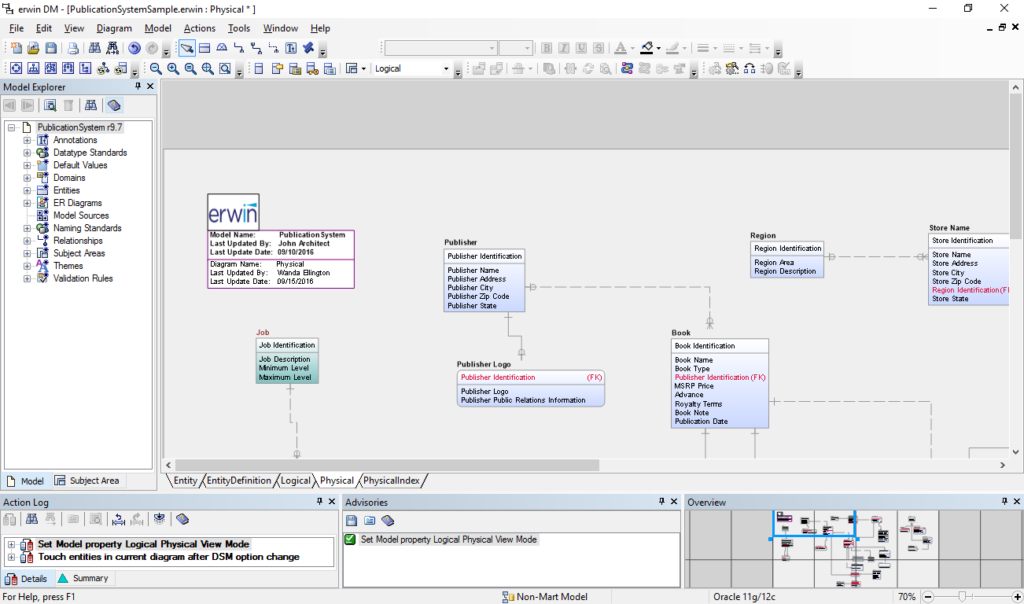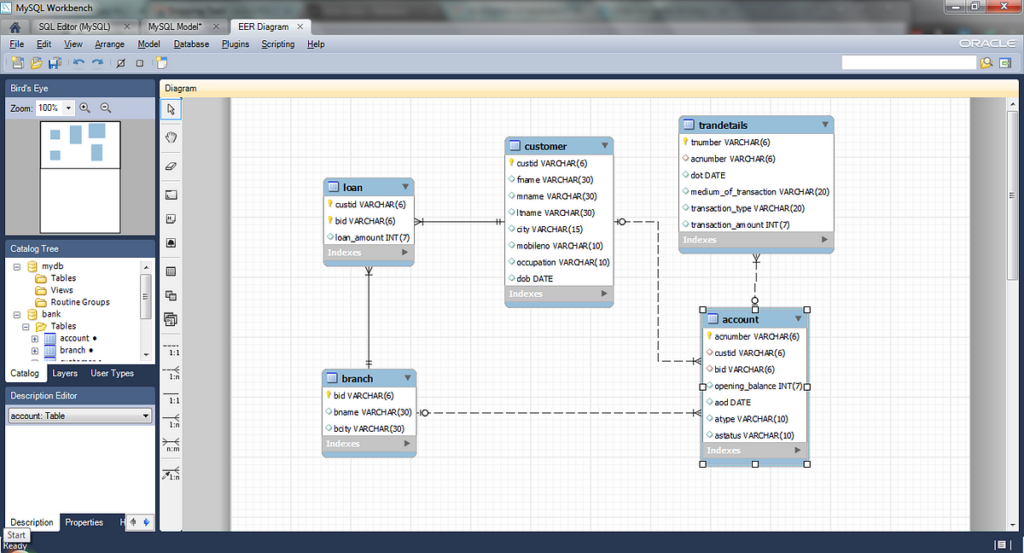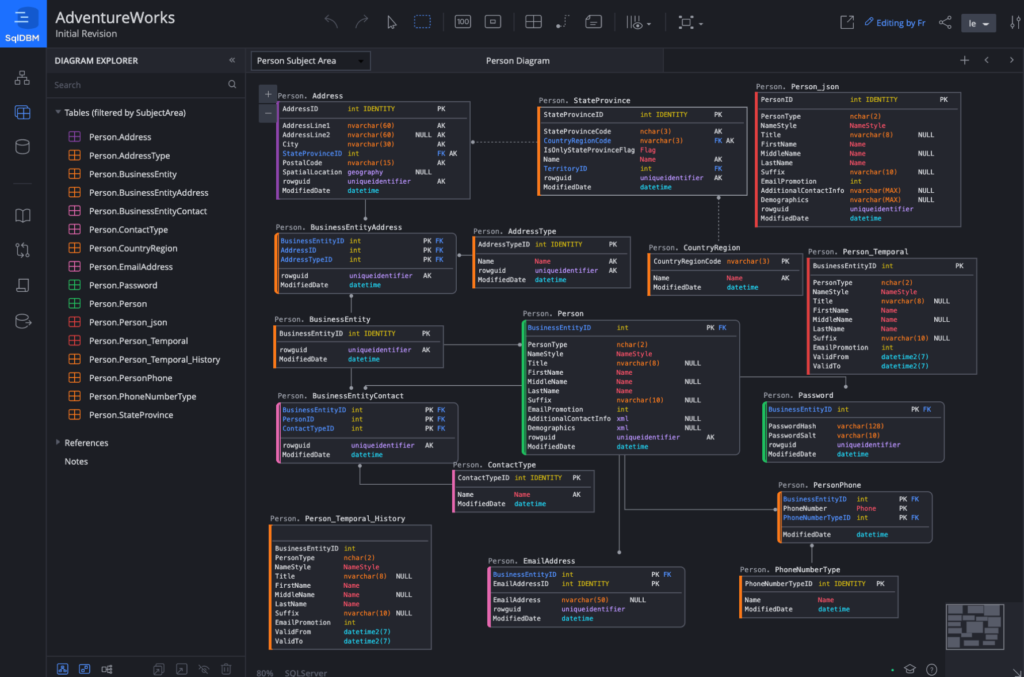Have you ever envisioned the fascinating process of data projection in various sectors? Whether it’s aviation, network operator data management, or the software development cycle, data is presented in a diagrammatic pattern to enhance comprehension. This is efficiently achieved through the implementation of effective data modeling, which not only facilitates seamless communication but also empowers businesses to streamline their workflow and make informed decisions.
Now, you might wonder, what makes data modeling so effective? Companies and organizations that have established a robust ecosystem with data modeling tools experience significant benefits in terms of delivery, quality, communication, and resource management. On the other hand, those lacking in utilizing these tools often fall short in their data modeling approach.
This highlights the importance of selecting the right data modeling tools, as they act as a crucial bridge between Business and DB Administration. To succeed in this endeavor, one must be well-versed in the proper tools for managing data. Let’s explore the top and powerful data modeling tools that are widely used for this purpose. But before diving into that, let’s first grasp the fundamentals of data modeling.
What is Data Modeling?
Data Modeling is the process of creating a graphical representation that encompasses data types, storage locations, and data flow when triggered.
These data models are crafted with a focus on fulfilling business requirements, allowing stakeholders’ ideas to be integrated into the system’s design or facilitating modifications to existing systems. The modeling process begins with gathering information from stakeholders or target audiences. This information is then used to construct a well-organized database design, akin to a diagrammatic roadmap that offers a clear visualization of the design concept. Data modeling plays a pivotal role in strategic planning and execution, enabling seamless sharing with relevant authorities.
Erwin Data Modeler: A Standardized Data Design Tool

Erwin Data Modeler stands out as a premier tool for organizations seeking standardized data design. This tool allows users to create and deploy diagrammatic data, regardless of its structural complexity or location. With automated features supporting schema generation and hybrid architecture setup, Erwin Data Modeler proves itself invaluable for analyzing data assets.
LucidChart: Precision in Micro Data Flow Handling

LucidChart, a cloud-based application available in trial and paid versions, offers unparalleled precision in handling micro data flows. This tool excels in tracking, editing, and entering data flows according to specific requirements. It proves particularly beneficial for gaining insights into business processes, providing various flowchart sizes, themes, and UML options.
MySQL Workbench: Compatibility with Complex ER Models

For those dealing with complex ER models, MySQL Workbench presents itself as a compatible choice. Designed primarily for MySQL DB, it facilitates SQL query generation, optimization, and execution. With support for major operating systems like Mac, Linux, and Windows, users can efficiently monitor performance through its performance dashboard.
Integrate.io: Cost-effective Cloud-based Data Extraction and Transformation

Integrate.io emerges as a cost-effective, cloud-based solution for data extraction, loading, and transformation across platforms. This tool streamlines data transfer between databases and data warehouses, making it ideal for budget-conscious companies looking to scale projects. Its low-code and no-code capabilities contribute to a seamless user experience.
SQL DBM: User-friendly SQL Database Management Tool

SQL DBM proves indispensable as a user-friendly SQL database management tool. Its elegant interface facilitates table creation and editing, supporting both forward and reverse engineering for SQL and MySQL projects. Furthermore, SQL DBM excels in presenting online-viewable documentation, enhancing project transparency.
DbSchema: Simplifying Data Complexity with a Graphical Interface
DbSchema leverages JDBC drivers to offer a graphical interface for simplifying data complexity. Notably, it excels in supporting SQL and NoSQL, providing efficient reverse engineering capabilities. Serving as a versatile tool for DB users, admins, and programmers, DbSchema aids in visualizing table relationships and other data models.
Archi: Cost-effective and Open-source Data Handling
In the realm of small and mid-sized organizations, Archi emerges as a cost-effective, open-source option for data handling. Its visual data representation capabilities, coupled with features like drill-down and adaptability, make it a popular choice among educational institutions and small businesses.
MapBusiness Online: Effective Sales Territory Management and Market Exploration
MapBusiness Online, boasting a global rating of 4.5, caters to businesses seeking effective sales territory management and market expansion. This tool offers insightful geographical analysis through methods such as demo maps and radius maps, making it an ideal solution for companies aiming to boost sales and marketing efforts.
Toad Data Modeler: Versatile Cross-platform DB Support
Toad Data Modeler shines as a versatile solution for cross-platform DB support, catering to SAP, SQL Server, DB2, Microsoft Access, and more. Developers benefit from its flexibility, customization options, and migration support. It proves invaluable for constructing complex logical and physical entities through forward and reverse engineering.
IBM Infosphere Data Architect: Streamlining Data Design Process
IBM Infosphere Data Architect, owned by IBM, stands as a reliable choice for the data design process. Its capability to work with various data patterns and standardize interfaces across applications, databases, and servers sets it apart. Infosphere’s cross-lifecycle and organizational functionalities contribute to reduced time-to-market.
In conclusion, this comprehensive list showcases the top data modeling tools highly regarded by prominent companies. By exploring these tools, users can unlock their potential to enhance productivity and streamline various data-related tasks. While numerous alternatives exist, these ten selections have been curated based on reviews, ratings, and adaptability to provide a well-rounded overview of the best options available.






